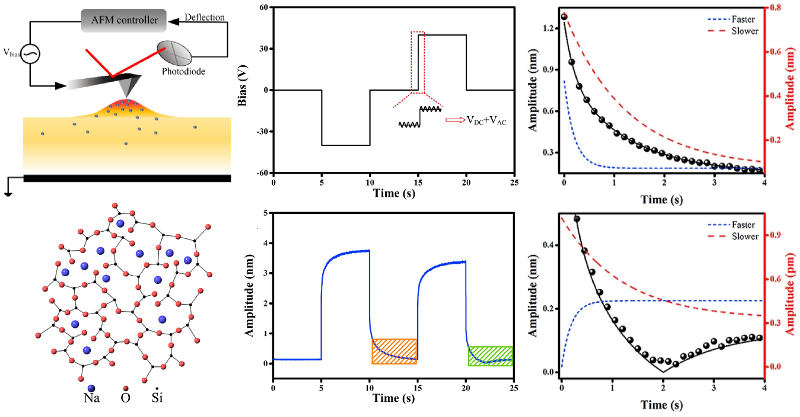AFM Systems
AFM Accessories
Learning
Contact Us
 Part of the Oxford Instruments Group
Part of the Oxford Instruments Group
Researchers investigated the electrochemical dynamics of a model dual-ion material using AFM techniques. The nanoscale measurements allowed them to separate the contributions of competing relaxation processes and determine values for local diffusivity and activation energy.
 Dual-ion batteries, which use both anions and cations in the charge-discharge process, have exciting potential for electric vehicles, grid-scale storage, and other energy technology. However, a deeper understanding of electrochemical conversion processes in multiple-ion systems is needed to turn this potential into reality.
Dual-ion batteries, which use both anions and cations in the charge-discharge process, have exciting potential for electric vehicles, grid-scale storage, and other energy technology. However, a deeper understanding of electrochemical conversion processes in multiple-ion systems is needed to turn this potential into reality.
A team led by researchers at Xiangtan University used AFM tools to resolve the dynamics of dual-ion systems on the nanoscale. Through measurements of local electrochemical strain relaxation on soda-lime float glass, they decoupled two competing effects: a faster process arising from Vegard strain and a slower process from electrochemical dipoles. By varying the measurement temperature they also determined values for the local diffusion coefficient D and activation energy.
The results demonstrate a powerful tool for evaluating ion dynamics on the nanoscale that could prove valuable in a wide range of energy storage and conversion applications.

Cypher ES and MFP-3D BIO
Strain relaxation measurements of nanometer-scale volumes were made using electrochemical strain microscopy (ESM) on a Cypher ES AFM under nitrogen flow. The sample was electrically grounded and a positive or negative bias voltage applied to the tip of a conductive cantilever. As these data suggest, the ESM option for Asylum AFMs provides unprecedented resolution for electrochemical studies. Temperature-dependent measurements were straightforward to set up and perform using the built-in heating stage of the Cypher ES, which provides precise temperature control up to 250 °C. Additional experiments to compare the first and second harmonic components of the ESM signal (not shown here) were performed on an MFP-3D BIO AFM in ambient conditions.
Citation: J. Yu, B. Huang, A. Li et al., Resolving local dynamics of dual ions at the nanoscale in electrochemically active materials. Nano Energy 66, 104160 (2019). https://doi.org/10.1016/j.nanoen.2019.104160
Note: The data shown here are reused under fair use from the original article, which can be accessed through the article link above.
